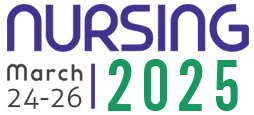Title: Implementation of the data, measurement, and analytics program (DataMAP) to enhance decision-making in a pediatric post-acute continuum of care
Abstract:
The effective use of data is critical to driving operational efficiency, improving patient outcomes, and enhancing financial performance in healthcare settings. This presentation discusses the implementation of the Data, Measurement, and Analytics Program (DataMAP), designed to leverage clinical, administrative, and financial data through real-time dashboards to support informed day-to-day decision-making in a healthcare facility.
DataMAP was developed to address the challenge of siloed data and delayed access to actionable insights. The program integrates data from multiple sources, including electronic health records (EHR), billing systems, and human resources platforms, into user-friendly dashboards. These dashboards provide clinical leaders, administrative staff, and financial teams with real-time access to key performance indicators (KPIs) such as patient outcomes, staffing levels, resource utilization, revenue cycles, and operational efficiency metrics.
Key components of DataMAP include:
- Customizable Dashboards: Tailored to the needs of different departments, enabling leaders to track metrics relevant to their goals and make data-driven adjustments.
- Real-Time Data Integration: Allows for timely interventions, such as staffing adjustments, cost control, and patient care improvements.
- Predictive Analytics: Provides insights into trends, patient acuity, and financial projections, empowering proactive decision-making.
The presentation will cover the implementation process, from system integration to staff training, and emphasize the importance of data governance and stakeholder engagement in ensuring accurate, reliable data. Additionally, it will highlight the role of leadership in fostering a data-driven culture and ensuring that insights are translated into actionable strategies.
Early results from the DataMAP implementation demonstrate improvements in operational efficiency, patient care delivery, and financial performance. The program also reduced decision-making time and enhanced collaboration across clinical and administrative teams. This presentation will provide practical insights and lessons learned for healthcare organizations looking to implement similar data-driven programs.


